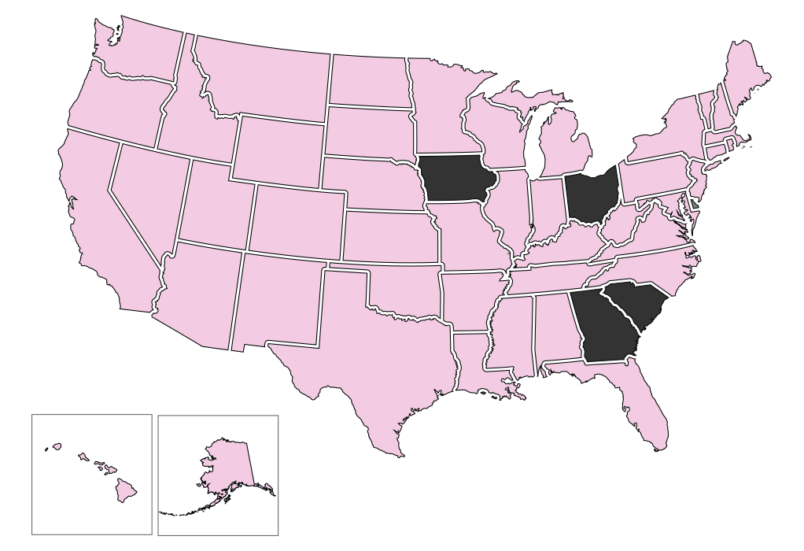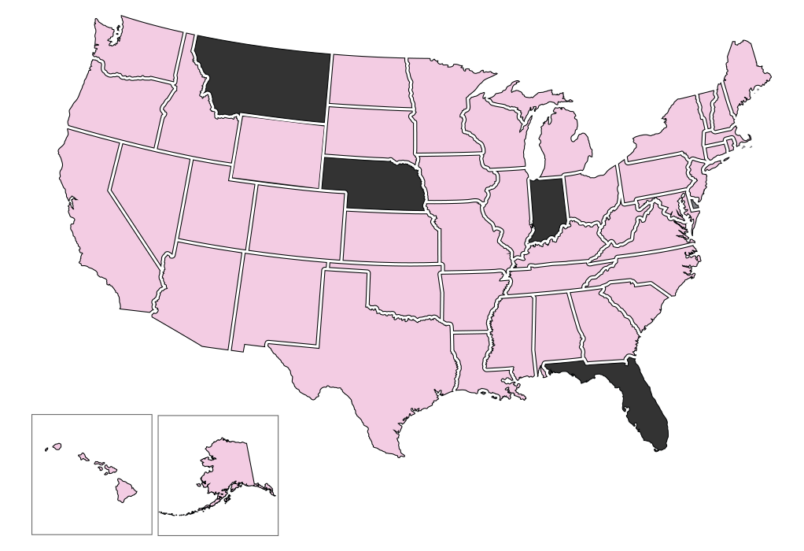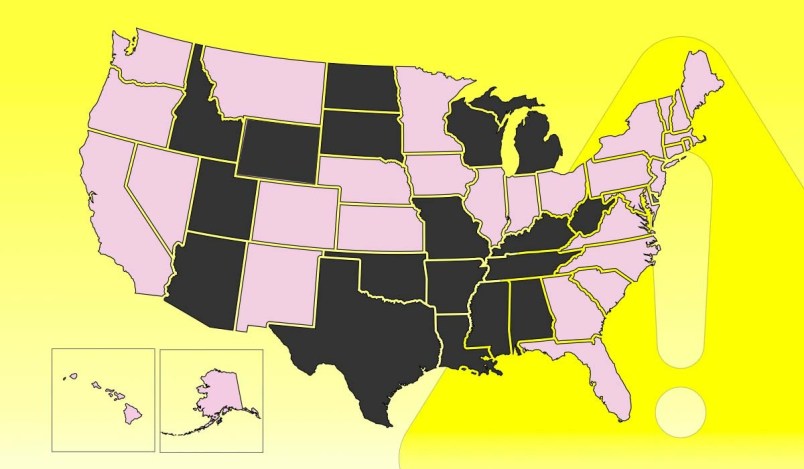If the Supreme Court overturns Roe v. Wade, the dominoes will fall fast.
In 18 states, abortion will become almost immediately illegal. Those states already have either an abortion ban that predates Roe on the books or a trigger law specifically written to ban or nearly ban abortion as soon as Roe falls, or both, according to an analysis by the Guttmacher Institute and subsequent legislature actions.
They are Alabama, Arizona, Arkansas, Idaho, Kentucky, Louisiana, Michigan, Mississippi, Missouri, North Dakota, Oklahoma, South Dakota, Tennessee, Texas, Utah, West Virginia, Wisconsin and Wyoming.

The Supreme Court decision that would trigger this mass blackout could come as soon as this summer.
Another four states have six-week abortion bans ready to put into place, which prohibit virtually all abortions since most women don’t yet know that they’re pregnant at that early stage. Some of those bans were blocked by courts in accordance with Roe, and could be revived.
They are Georgia, Iowa, Ohio and South Carolina.

Four more states have toyed with less draconian bans or attempted to curtail abortion in other ways, demonstrating a willingness to go further in Roe’s absence.
They are Florida, Indiana, Montana and Nebraska. Nebraska in particular tried to pass its own trigger law in early April, but the legislation failed in the state Senate.

That’s 26 total states poised to ban or severely restrict abortion access the moment the court overturns Roe, 18 of them to act almost immediately. It’s a picture of a bifurcated America, where legal abortions become a feature of blue states only.
It’s a future less fantastical than it seemed before the Supreme Court oral arguments in Dobbs v. Jackson Women’s Health Organization.
Some experts and court-watchers expected the large conservative majority to opt for a gradual chipping away at abortion protections rather than overturning Roe whole hog, perhaps by tampering with the viability standard.
If the court were to tinker with the viability standard, the point which demarcates the end of the around-24-week period in which it’s legal to get an abortion without “undue burden,” they could have sustained legal abortion in name while sparking a race by red states to set the shortest abortion bans. It also may have helped tamp down the historic backlash that would inevitably swell from the overturning of 50 years of abortion rights in the United States.
Granted, a lot can happen between oral arguments and a decision, which will likely take months. But the conservative contingent sounded eager to go after Roe and Casey v. Planned Parenthood outright, with some justices questioning the right’s constitutional grounding and others pointing to episodes of correctly overturned precedent in the court’s history.
The liberal justices attempted to sway Chief Justice John Roberts with appeals about the court’s legacy, but he seemed preoccupied with the possibility of a hypothetical 15-week abortion ban.
Protests broke out around the Supreme Court building after the arguments, with demonstrators ringing the building and holding up signs declaring abortion an inalienable right.



